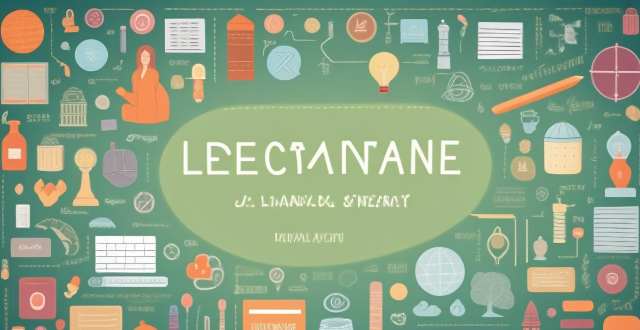The text describes the latest trends in educational technology innovation, including personalized learning, artificial intelligence (AI), augmented reality (AR) and virtual reality (VR), mobile learning, and gamification. Personalized learning tailors instruction to meet individual student needs, while AI analyzes data from student performance to provide personalized recommendations for improvement. AR and VR create immersive learning experiences through simulations and virtual field trips. Mobile learning uses mobile devices to deliver educational content and facilitate communication between students and teachers. Gamification incorporates game design elements into non-game contexts, such as education, to make learning more fun and engaging. The benefits of these trends include improved student engagement and motivation, increased retention and understanding of material, better preparation for future careers and lifelong learning, and the development of important skills such as critical thinking, problem-solving, and collaboration.

Latest Trends in Educational Technology Innovation
Educational technology innovation is constantly evolving, and there are several trends that are shaping the future of education. Here are some of the latest trends in educational technology innovation:
Personalized Learning
Personalized learning is a trend that is gaining momentum in educational technology. It involves tailoring instruction to meet the individual needs of each student. This can include adaptive learning systems that adjust the difficulty level of content based on a student's performance, or personalized learning paths that allow students to progress at their own pace.
Benefits of Personalized Learning
- Improved student engagement and motivation
- Increased retention and understanding of material
- Better preparation for future careers and lifelong learning
Artificial Intelligence (AI)
Artificial intelligence is being used in educational technology to improve teaching and learning outcomes. AI can be used to analyze data from student performance, identify areas where students need additional support, and provide personalized recommendations for improvement.
Applications of AI in Education
- Intelligent tutoring systems that provide personalized feedback and guidance
- Automated grading and assessment tools that save teachers time
- Predictive analytics that help educators identify at-risk students early on
Augmented Reality (AR) and Virtual Reality (VR)
Augmented reality and virtual reality are being used in educational technology to create immersive learning experiences. These technologies allow students to explore complex concepts and simulations in a way that is engaging and interactive.
Uses of AR and VR in Education
- Virtual field trips that bring history and science to life
- Interactive simulations that allow students to practice skills in a safe environment
- Collaborative learning experiences that promote teamwork and problem-solving
Mobile Learning
Mobile learning is becoming increasingly popular as more students have access to smartphones and tablets. This trend involves using mobile devices to deliver educational content and resources, as well as to facilitate communication between students and teachers.
Advantages of Mobile Learning
- Flexibility and convenience for students who may not have access to traditional classroom settings
- Access to a wide range of educational apps and tools
- Increased engagement through the use of multimedia and interactive features
Gamification
Gamification involves incorporating game design elements into non-game contexts, such as education. This trend aims to make learning more fun and engaging by turning it into a game-like experience.
Benefits of Gamification in Education
- Increased student motivation and participation
- Improved retention and understanding of material
- Development of important skills such as critical thinking, problem-solving, and collaboration
In conclusion, these are some of the latest trends in educational technology innovation. As technology continues to evolve, it will be interesting to see how these trends shape the future of education.